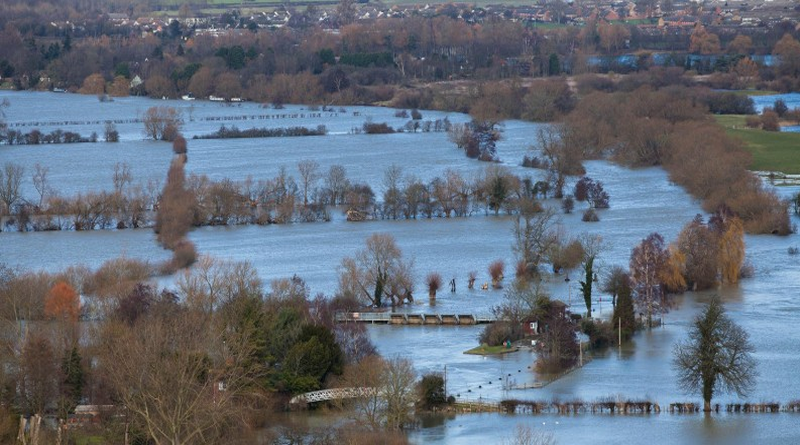Human impacts fuel weather extremes
The serious floods that hit southern England in the winter of 2013-14 were at least partly a consequence of climate change driven by the global warming that results from fossil fuel combustion.
To be precise, the extreme rainfall that led to £431 million (US$622 million) of damage was made 43% more likely by human-induced climate change, according to a new study led by the University of Oxford.
And weather events such extreme drought that has blighted agriculture and blistered the orchards of California can no longer be seen as a purely natural hazard, according to a separate study by a team from the University of Birmingham in the UK.
Nathalie Schaller, postdoctoral research assistant in the University of Oxford Department of Physics, and colleagues report in Nature Climate Changejournal that the succession of storms that delivered unprecedented amounts of rain to southern England at the close of 2013 could be considered as a once-in-a-century event, but climate change made such a flood measurably more likely.
Citizen science
The researchers used a citizen science project called weather@home to model 135,354 simulations of possible weather under current climate conditions and under what modellers call “counterfactual” regimes, in which humans had no influence on the atmospheric chemistry.
In a high proportion of the simulations, human influence increased the amount of water an atmosphere can hold – every 1°C rise in temperature means the air can, in theory, absorb 7% more moisture – while the same warming increased the number of January days with a westerly flow of air. The mix was enough to set the rivers overflowing.
The scientists considered the entire sequence of events and looked at atmospheric circulation, rainfall, river flow, inundation and properties at risk in three counties in the southwest of England and the Thames Valley in the southeast.
“Severe droughts in human-dominated environments,
as experienced in recent years in China, Brazil and
the USA, cannot be seen as purely natural hazards”
“We found that the extreme rainfall as seen in January 2014 is more likely to occur in a changing climate,” Dr Schaller says. “This is because not only does the higher water-holding capacity lead to increased rainfall, but climate change makes the atmosphere more favourable to low-pressure systems bringing rain from the Atlantic across southern England.”
And in a commentary in Nature Geoscience, a group led by Anne Van Loon, lecturer in physical geography at the University of Birmingham School of Geography, Earth and Environmental Sciences, argues that drought research can no longer be considered just a matter of water availability and socio-economics.
Water management
Europe experienced severe drought and wildfires in 2015, while California has been in the grip of drought for four years. Water managers would have to think again about how they planned for such events.
“Society is not a passive victim of drought,” Dr Van Loon says. “It responds to water shortages, and these responses influence water levels in reservoirs, aquifers and rivers.
“Severe droughts in human-dominated environments, as experienced in recent years in China, Brazil and the USA, cannot be seen as purely natural hazards because human activities play a role.”
So, to manage drought, authorities have to acknowledge that human influence is as integral to it as natural variability. New scientific approaches are needed to disentangle the differing causes of drought, but researchers should also consider the impact of drought on society and how it responds.
“We can see the water system as a bucket of water half-empty due to drought, which needs to be filled up to its original level,” Dr Van Loon says. “We can calculate how much rain is needed to fill up the bucket, but at the same time we are constantly taking water out of the bucket and putting water in.” – Climate News Network




